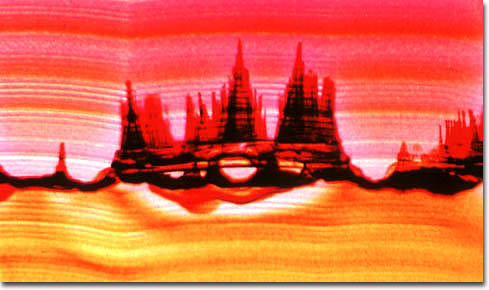|
Agate is a translucent silica mineral usually considered a variety of chalcedony. Though the semiprecious gemstone is often colorfully banded in nature, many commercial varieties of agate are artificially stained to brighten dull gray hues and make them more attractive. The cutting and staining of agates for ornamental purposes is often said to have developed in the Idar-Oberstein district of Germany several centuries ago, but today the greatest producers of the gemstones are Uruguay, Brazil and the United States. Types of agate are generally described based upon the distinctive coloring or shape of their bands. In a ring, or eye, agate, for instance, the bands appear as concentric circles. A more unusual variety, which exhibits a number of impurities that appear in branching filaments reminiscent of plant growth, is called moss agate.
|
